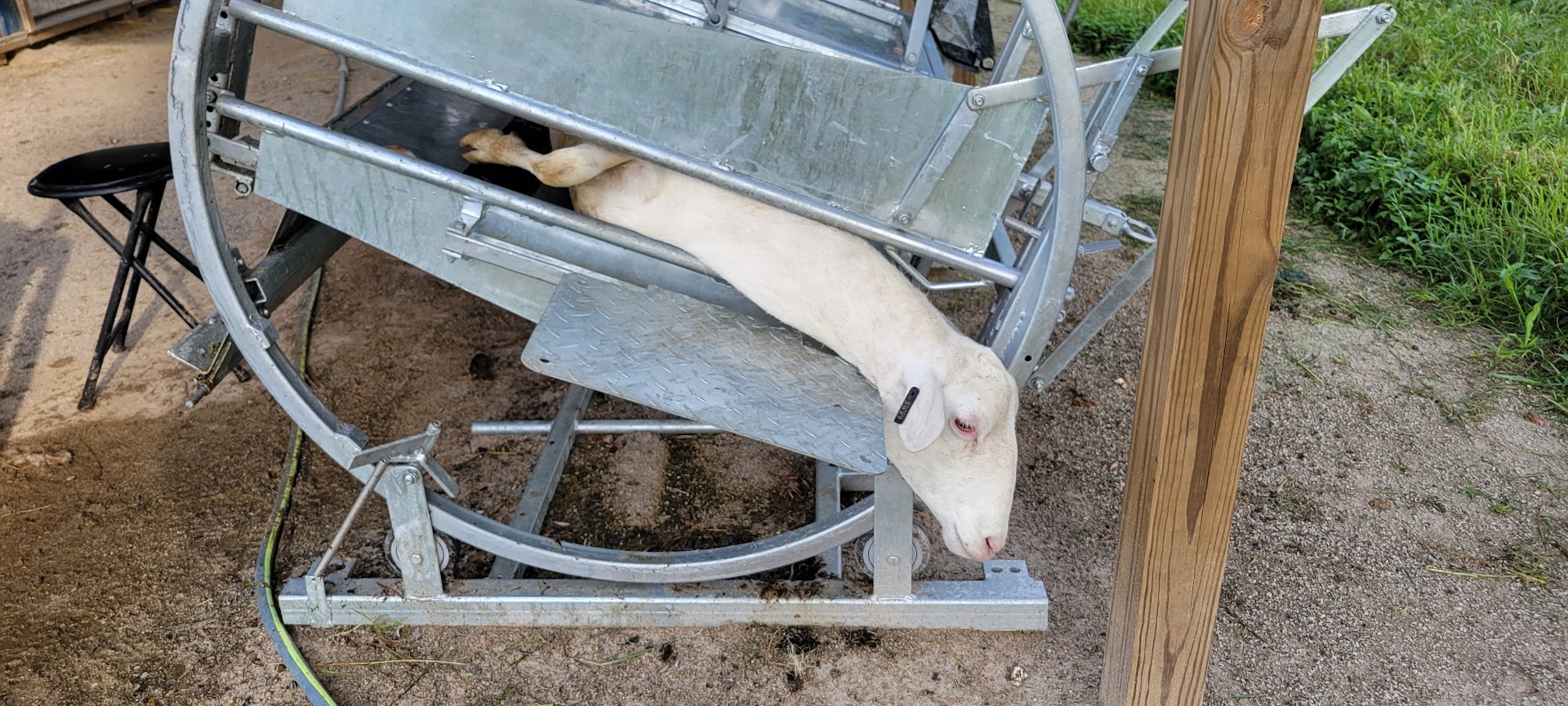This year has been full of challenges, and now we get to add foot rot to the list. First, we had an explosion of triplets. Then we got way more rain than we imagined we would, all summer long. That rain has brought some very nasty business to the farm: foot rot. Every year during the wet seasons, I’ve had a sheep or two start walking on their tiptoes. It’s always been scald, which is very common and easy to address. I assumed I was seeing the same thing this year until more and more sheep started limping in a matter of days. Upon close inspection, over half of them have rot. This is the first time I’ve ever seen it, and a part of me wanted to remain in denial about it. But there is no denying it after working every single sheep on the property. It’s here. I have my suspicions about which sheep is patient zero, but it doesn’t really matter at this point.
What is Foot Rot?
Foot rot is a condition in which bacteria enter the hoof and digest the hard, horny tissue of the sole that protects the fleshy tissue of the hoof. In more advanced cases, the hoof horn becomes under-run and can actually separate from the hoof wall. My sheep were in various stages of foot rot, with about 25% exhibiting “level 3” infection rates out of a 1-5 scale.
What will I do?
My first step was to contact all the people scheduled to pick up their lambs to let them know what is happening. Those were hard conversations to have. They each had the option to cancel their purchase altogether with no penalty. Thank goodness, none of them did so. However, I’ve kept the lambs longer than I normally would so that I can treat them before they go to their new farms. It’s important to make sure the infection is gone before they go, or they can spread it there as well. Then I developed a plan to control and then eradicate foot rot from my flock.
My Plan to Eradicate Foot Rot from my Flock
Hoof rot is no joke. It’s expensive, time-consuming, and really hard to eradicate. These are the steps I am following, based on this article:
- Treat every sheep with antibiotics. My vet prescribed Nuflor, given twice, 48 hours apart.
- Spread lime around heavy traffic areas (i.e., waterers, hay feeders, gates) weekly.
- Once they stop limping (all but one did before the second shot), soak in a zinc sulfate foot bath and trim hooves.
– Clean up and dispose of or burn hoof clippings.
– Lime the area around the trimming station.
– Use a bleach solution to disinfect hoof trimming gear between each animal. - Soak feet in zinc sulfate 2-3 times per week for 3-6 weeks, moving to pastures that have been rested for at least 7 days following the 2nd bath.
- After three to six weeks, re-evaluate and re-trim each sheep’s feet as needed.
– If clean, do a once-weekly foot bath for another 3-6 weeks. Re-evaluate.
– If re-infected, separate from the “clean” sheep, treat with Draxxin, and continue twice weekly foot baths for 3-6 more weeks. Then re-evaluate.
– Follow the cleaning protocols when trimming hooves (clipping disposal, lime, bleach). - Once the whole flock is “clean” and those with chronic infections (infected 3 weeks after Draxxin) have been culled, move to foot baths once every other week for 6 weeks and weekly during wet seasons.
- Evaluate and trim the feet of all sheep every 3 months to ensure none are actively infected. Follow the cleaning protocols when trimming hooves.
- Try to obtain the foot rot vaccine and use it for 2 years on all breeding stock.
- Provide all future customers with full disclosure that my flock has been infected with foot rot so they can make informed purchasing decisions.
How It’s Going
This is hard work. Step one wasn’t terrible because my stepson is in school to become a physician’s assistant and was excited to practice giving intramuscular injections. With his help, I was able to treat all the sheep within a week. Nuflor is super thick, so drawing that into the syringes is tough! It’s also expensive, but not as expensive as Draxxin will be.
Step three was exhausting. Because I still have all the lambs, it took me over a week to trim all the feet on the property. I was out there in the mornings before work for 1.5 hours, after work for another 2-3 hours, and all day long on the weekends. I even used 10 hours of vacation time to work on feet. I’ve decided to hire a professional who has experience dealing with hoof rot to come do trimming for me in 3-6 weeks.
Did you know sheep don’t like getting their feet wet? Wow. I have to really poke and prod them to walk forward in the chute when they see the foot bath tray, and then they constantly try to back out of it! Zinc sulfate smells pretty funky to begin with, but by the end of the work session, it will smell even worse. It seems like over half of the sheep used the foot bath as a toilet, too. Clean-up is no fun.
I’m having a difficult time finding the vaccine. Even my vet is unfamiliar. If you know where I can find it, please, PLEASE send me an email!
Overall, I’m feeling pretty crumby. I’ve worked very hard to establish a disease-free flock. I follow all the quarantine and testing protocols, and still this happened. It’s pretty disheartening. However, I will do everything within my power to get all my sheep healthy and to prevent another outbreak.

